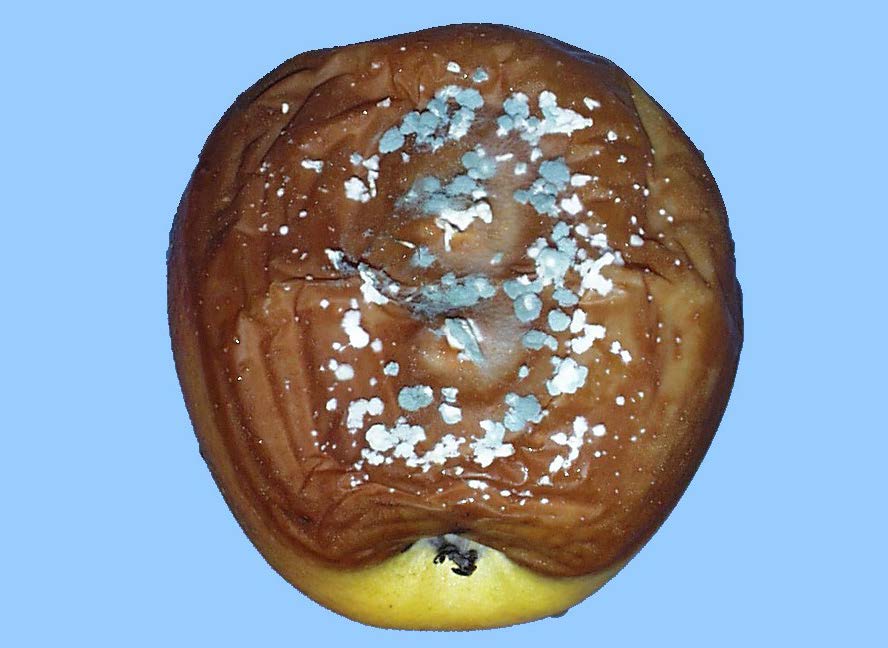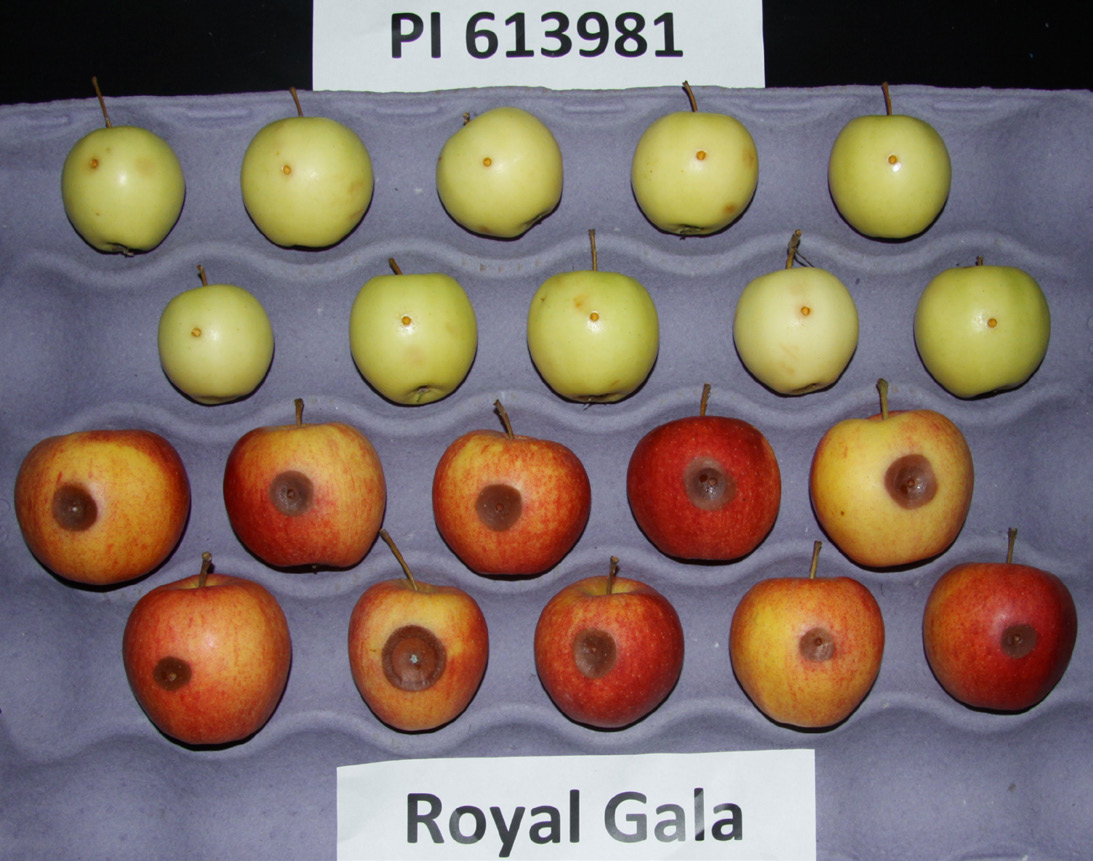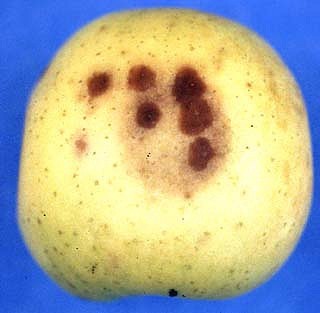Mercy Olmstead, Extension Team Leader and Michael Wisniewski, USDA-ARS
RosBREED is helping breeders release cultivars that are durably disease resistant. Many of the diseases that have been profiled in this column thus far are associated with plants and preharvest fruit quality, but postharvest diseases like apple blue mold are also receiving attention in the project. Thus, our feature for this month’s newsletter is apple blue mold, caused by the fungus Penicillium expansum.
Symptoms and Impact
Apple blue mold (Figure 1) is a significant postharvest disease that causes heavy economic losses due to decay in stored apples destined for the fresh market. Economic losses may be as high as $4.5 million to $5 million annually. The fungus primarily infects fruit through wounds from punctures or bruises, and thus minimizing activities in the postharvest chain that can damage fruit is very important. A good video resource for various postharvest diseases of pome fruits, including blue mold (in pear) is available at: http://bit.ly/1NLIwgq.
Fighting the Pathogen

where areas of blue-green tufts of spores develop. Photo: W. Janisiewicz, USDA-ARS
Growers combat potential sources of inoculum with good orchard sanitation – ensuring that decayed fruit and organic material on the orchard floor is removed. In the packinghouse, a drench or spray of a fungicide or a biocontrol agent (Pseudomonas syringae) can be used to prevent apple blue mold or other postharvest fungi from decreasing fruit quality after entering storage. Additionally, good sanitation of harvest and packing line equipment is essential to prevent harboring of P. expansum spores that may re-infect other fruit.
Resistant Germplasm & Breeding
With many diseases, identifying a genetic source of tolerance or resistance is a necessary first step. With such a source, DNA-based tools can be developed and breeders can effectively develop new cultivars that genetically combat apple blue mold. A source of resistance has been found in Malus sieversii, a wild apple native to the mountains in Central Asia, particularly southern Kazakhstan, eastern Uzbekistan, Kyrgyzstan, Tajikistan, northern Afghanistan and Xinjiang, China. This large-fruited apple species is the primary ancestor of domesticated apple (Cornille et al. 2012), easing its breeding use, with fewer generations expected to be needed to introgress the desirable resistance allele(s) into elite genomic backgrounds suitable for commercial release compared to use of Malus species sources with small and bitter fruit.
Since Malus sieversii is a genetically diverse species, numerous sources of resistance to blue mold may be present and the resistance genes may have diverse functions, ranging from the presence of specific phenolic compounds that may be fungitoxic, to the ability to quickly recognize the presence of the pathogen and respond with a variety of defense mechanisms. The specific mechanism responsible for the resistance identified in M. sieversii PI613981 is currently being investigated.

blue mold compared to ‘Royal Gala’, which is susceptible. Photo: M. Wisniewski,
USDA-ARS
Bringing in P. expansum resistance from M. sieversii is possible through the collaboration of Michael Wisniewski and Jay Norelli, USDA-ARS, Kearneysville, WV, and Samir Droby, Volcani Institute, Israel (Figure 2). Their project will identify QTL(s) for blue mold resistance in a mapping population of ‘Royal Gala’ × M. sieversii PI613981. This information will then be used in the RosBREED project to develop a DNA test that will aid breeders in releasing cultivars resistant to apple blue mold.
On the Horizon: Solutions from RosBREED
Routine use of a DNA test for apple blue mold resistance will help breeders to develop new apple cultivars that are resistant to blue mold leading to less postharvest fruit decay. Economic losses would be lowered in both the fresh fruit and processed industries, leading to a success for apple growers and processers!
Reference
Cornille A, Gladieux P, Smulders MJ, Roldán-Ruiz I, Laurens F, et al. (2012). “New Insight into the History of Domesticated Apple: Secondary Contribution of the European Wild Apple to the Genome of Cultivated Varieties”. PLoS Genetics 8(5)

Photo: W. Janisiewicz, USDA-ARS
